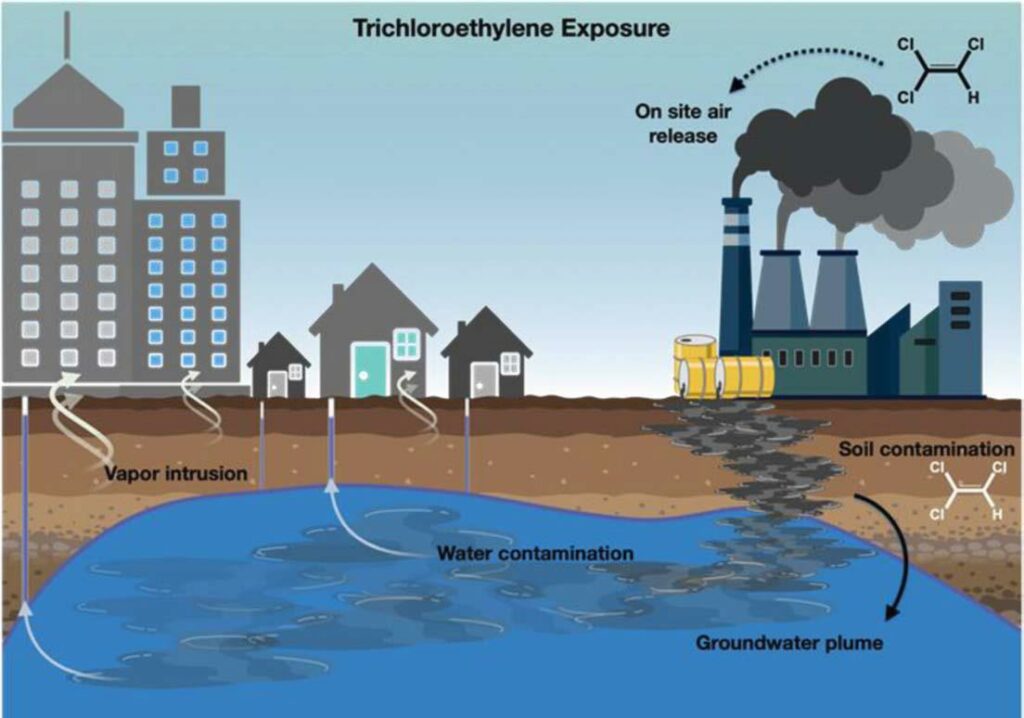Parkinson’s disease, a neural condition affecting the nervous system and causing movement issues, has been on the rise globally. In a concerning development, scientists have found a potential link between Parkinson’s disease and a widely used chemical called trichloroethylene (TCE).1 TCE is useful for various purposes, including decaffeinating coffee, degreasing metal, and dry cleaning clothes. This chemical poses significant risks to human health, including a possible 500% increased risk of developing Parkinson’s disease. In this article, we delve into the research findings and explore the implications of TCE exposure on public health.
TCE, a solvent and industrial pollutant, is a part of multiple industries, military applications, and medical procedures. Although its use is in decline over the years, TCE is still the go-to for degreasing metal and spot dry cleaning. Tragically, TCE contamination is widespread, with half of the most toxic Superfund sites identified by the Environmental Protection Agency (EPA) containing TCE. Military bases, including Camp Lejeune, have been heavily affected by TCE contamination. It is crucial to address the pervasiveness of TCE and its impact on public health.
TCE and Parkinson’s Disease
Scientists have long suspected a potential link between TCE and Parkinson’s disease, and recent research has provided compelling evidence to support this claim.2 Animal studies have shown that TCE readily enters the brain and damages mitochondria, the energy-producing parts of cells. Moreover, high doses of TCE cause selective loss of dopamine-producing nerve cells, a hallmark of Parkinson’s disease in humans. While direct occupational exposure to TCE poses an elevated risk, millions more may encounter the chemical unknowingly through outdoor air, contaminated groundwater, and indoor air pollution.

Case studies of individuals who developed Parkinson’s disease after TCE exposure further highlight the potential risks. Former NBA player Brian Grant, who was likely exposed to TCE as a child when his father was stationed at Camp Lejeune, received a Parkinson’s diagnosis at the age of 36. Another case involves a Navy captain who developed Parkinson’s 30 years after exposure to TCE-contaminated water at Camp Lejeune. These case studies demonstrate the challenges of establishing a direct causal link between TCE exposure and Parkinson’s disease, as symptoms often appear decades after exposure.
Addressing the Threat to Public Health
Given the alarming risks posed by TCE, it is crucial to take proactive measures to protect public health. The authors of the research propose several actions to address the threat of TCE. Remediation of contaminated sites and the implementation of vapor remediation systems, similar to those used for radon, can help mitigate indoor air exposure.
Additionally, increased research is needed to better understand the mechanisms through which TCE contributes to Parkinson’s disease and other associated health issues. Monitoring TCE levels in various environments, including groundwater, drinking water, soil, and indoor and outdoor air, is crucial for public health protection. Furthermore, there is a need for stronger regulations and a complete ban on the use of TCE and similar chemicals to prevent further harm to human health.
Conclusion
The mounting evidence linking TCE exposure to Parkinson’s disease calls for immediate action. The widespread use and contamination of TCE pose a significant threat to public health, with potentially millions of individuals at risk of exposure. Understanding the risks associated with TCE and implementing measures to mitigate exposure are critical steps in addressing this pressing issue. By prioritizing research, monitoring, and regulatory action, we can strive to protect individuals from the devastating impacts of TCE exposure and work towards a healthier future for all.
Keep Reading: Groundbreaking Discovery in Parkinson’s Disease Biomarker Revealed
Sources
- “Common Dry Cleaning Chemical Linked to Parkinson’s Disease.” University of Rochester Medical Center. May 14, 2023.
- “Widely used chemical strongly linked to Parkinson’s disease.” Science. Meredith Wadman. May 15, 2023.

